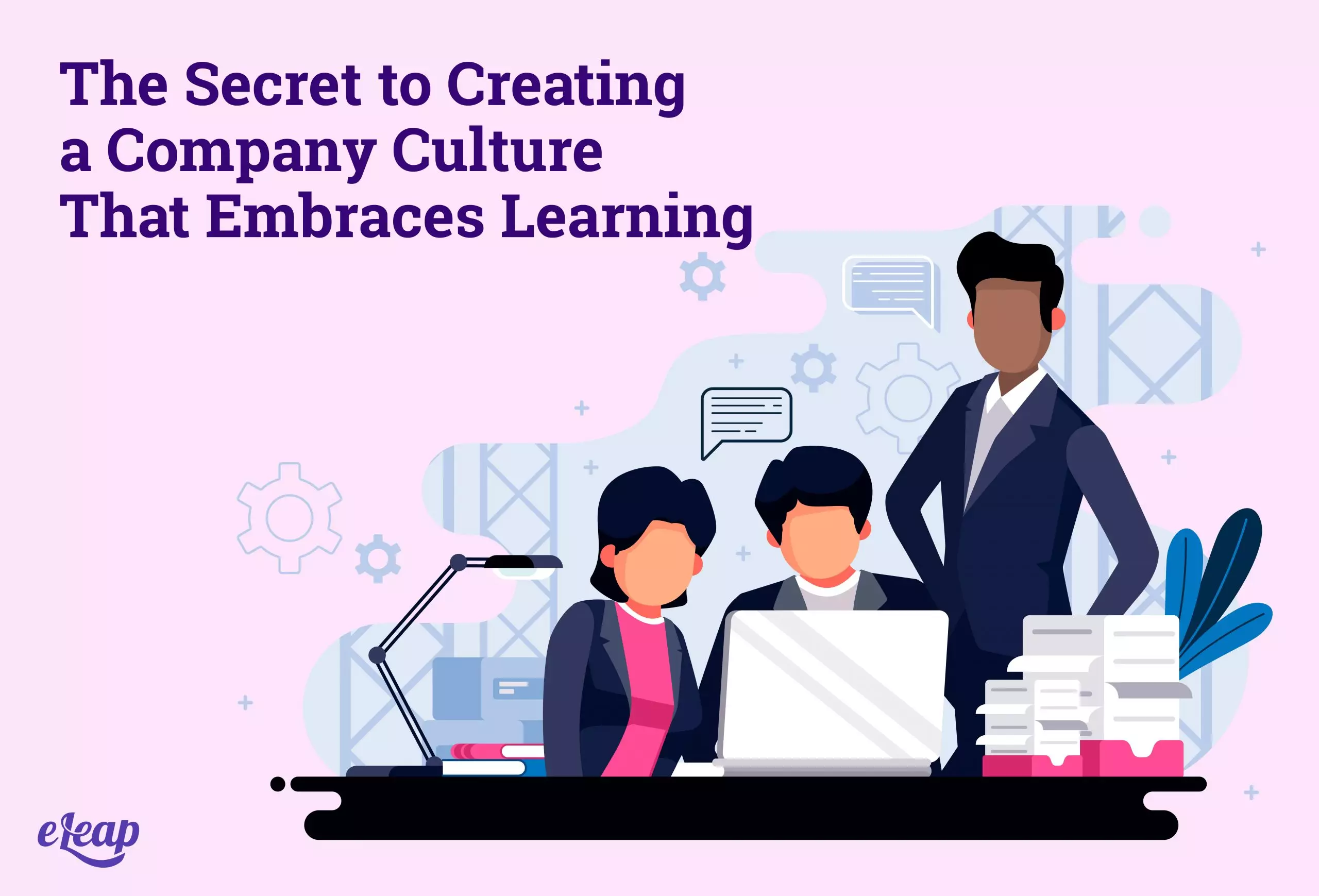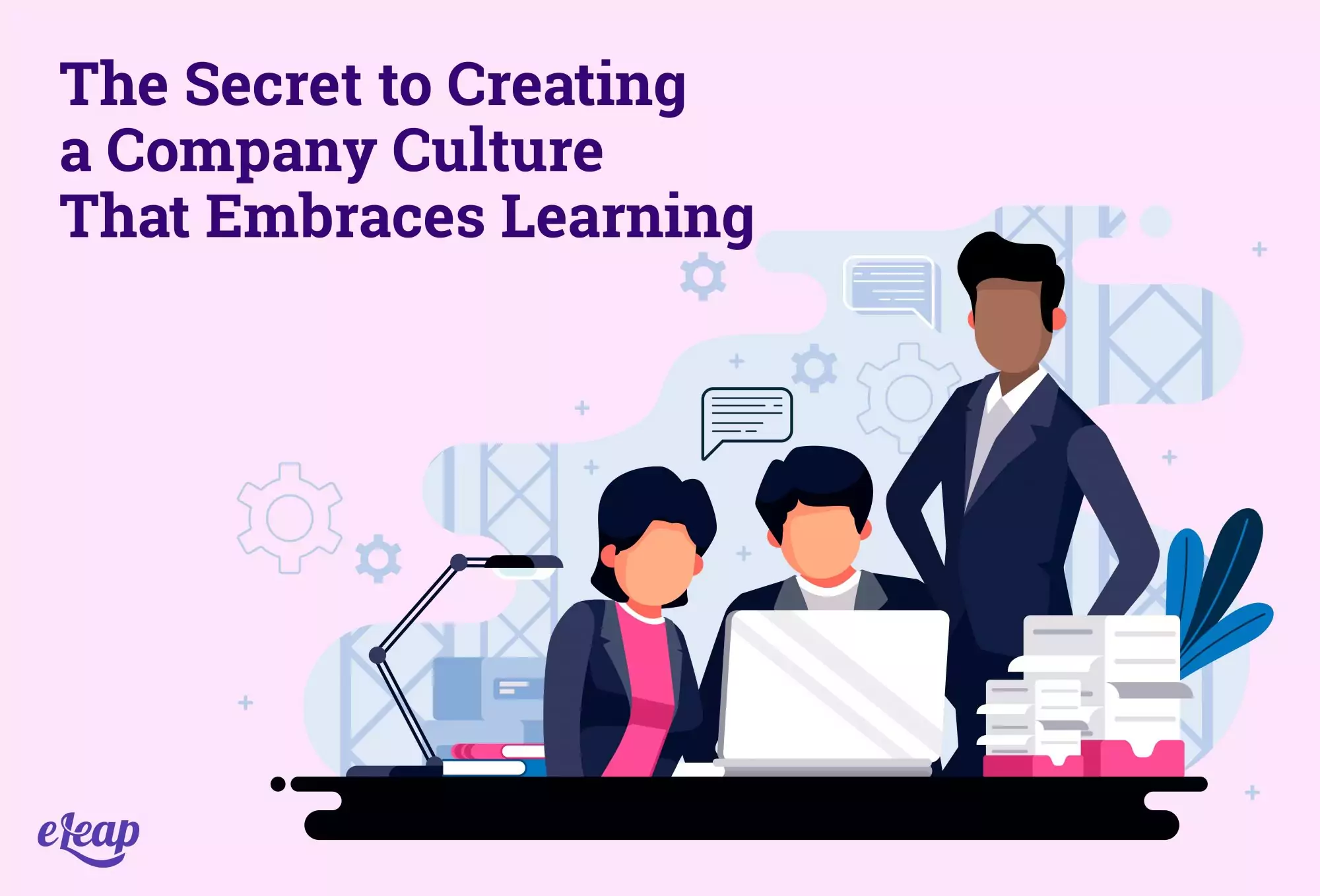The Secret to Creating a Company Culture That Embraces Learning

It wasn’t that long ago that the phrase “corporate culture” wasn’t used. However, the concept actually dates back to the early 1950s. Today, it has become a serious consideration as more and more business owners, CEOs, and decision-makers realize just how critical the right culture is to an organization’s success, ability to compete, and overall longevity. Not all company culture is the same, however. A company culture that nurtures learning and innovation is probably going to outperform one where these values are missing.

What Is a Company Culture?
Before we dive into anything in more depth, let’s define what corporate culture means. It’s really a catchall term used to define believes and behaviors that affect how a company’s employees and management interact with one another, how they deal with customers, how business transactions are handled, and more.
Too often, corporate culture is implied but not firmly defined. For instance, a culture might grow slowly and organically as the company develops based on the traits, beliefs, and behaviors of the people within the business. Think of the TV show Mad Men and how the behaviors of the executives created the culture in which the employees had to work. The same thing is true today – what your execs do and say, and how they act, determines what employees feel empowered to do or say.
It’s easy to see how a negative company culture can develop. The good news is that a positive culture can also be built from the ground up. Increasingly, companies seek to establish and foster a culture that embraces learning.
Why Create a Learning Culture?
You can create any type of culture you like, from innovation to technical expertise, so why is learning the focus here? Simply put, a learning company culture affects every single area of your business and touches on all other goals, including innovation and technical expertise. It also affects your ability to retain key talent and boost productivity across your business.
So, how do you go about building such a culture? It’s not all that difficult, but it will require a concerted effort. That’s the secret here – without intentionality, you cannot succeed. However, with intentional efforts, it becomes simpler.
Know Where You Stand
The first thing to do is determine where you stand. What is your current culture? In a best-case scenario, you have little or no culture currently. In a worst-case scenario, you’re dealing with something toxic. Determine where you are now and define your strategy when it comes to employee learning and development.
Know Where You Want to Go
Learning without a goal isn’t recommended. It’s aimless and pointless. While interest-led training does have its place, you need to know where you want to go so you can guide training efforts at least in broad strokes. What do you want to enable with your learning-focused culture? Based on that, you can then start determining what you want your employees to learn.
Create SMEs
In a company culture of learning, you need experts other employees can come to. So, you’ll need to establish some subject matter experts or SMEs. It’s about more than designating someone for employee Q&As, though. It’s about ensuring you have someone qualified to create learning content for your teams.
SMEs can author a wide range of content to be housed in your learning management system, and they can come from all levels of your organization. Obviously, managers might have more expertise in certain areas, but that’s not always the case. Make sure that you designate the most qualified people to be SMEs, as they will have a huge impact on your success.
Work with Employees
While you should define some of the learning goals concerning your culture, you also need to work with your employees. Ask what they want to learn. Determine what they need to develop and move forward in their professional lives. Involve them in the discussion – where do they want to go within your organization? What do they want to help you accomplish?
This is often the most critical part of creating a culture of learning. If you’re able to engage your employees in learning development, they’ll do a lot of the culture-creating for you. However, if you can’t engage them, most of your efforts will fall flat.
Make Education Accessible
You can’t create a company culture of learning if education is out of reach. Inaccessible information does no one any good. How many hoops do employees need to jump through? How much friction is involved in training?
One consideration here is using an online LMS. With digital technology, you empower your employees to learn anywhere, at any time, with any Internet-connected device. It doesn’t get much more accessible than that.
Encourage Learning as a Priority
Another vital step here is to make learning a priority. This should come from the top down, and it should be a case of leading by example. It should also be something that begins the moment an employee starts with your organization and should be an integral component of your onboarding process. Ideally, you’ll combine this with involving your employees in the discussion on learning and development. Engage new hires in planning their career with the business and let them begin exploring their educational and work opportunities.
Include Social Learning Opportunities
Finally, if you want to create a culture of learning, you need to include social learning opportunities. There are numerous ways to do this, from encouraging employees to talk about ideas with one another and to share resources to creating robust mentorship programs. User forums accessed through the LMS, chat-based social learning opportunities, and user-contributed knowledge bases – are just a few of the options available to you.
Bringing It All Together
As you can see from the discussion above, creating a culture of learning is definitely possible. It’s also simpler than you think. However, you cannot leave it to chance. You must intentionally set out to achieve this type of culture. Doing otherwise is an invitation to disaster. Without planning and intentional guidance from execs and decision-makers, a very different culture could grow. To learn more, click here.